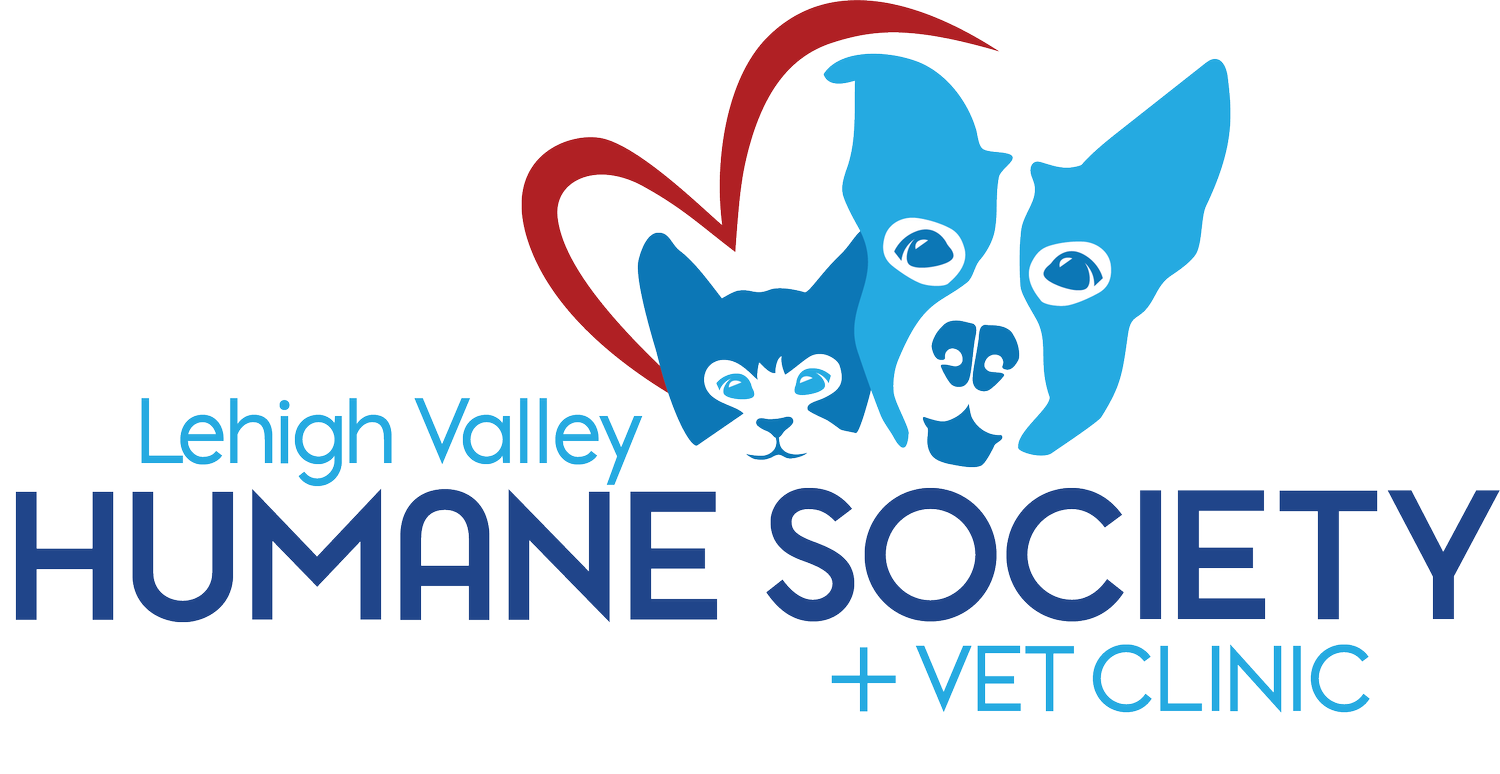Dear Friends,
As we close the chapter on 2024 and look to the horizon of a new year, one truth fills our hearts: the Lehigh Valley Humane Society is powered by love—love for the animals we care for and the community we serve.
This year, we’ve faced challenges that tested our resilience—economic uncertainties, housing barriers for pet owners, and the demands of a shifting world. Yet, through it all, one thing remained constant: our promise to be a beacon of hope for animals in need and the people who cherish them.
Together, We Made a Difference. With every wagging tail, gentle purr, and second chance given, we continued to write a story of compassion, transformation, and possibility. Here are just a few highlights from our incredible journey in 2024:
Transparency in Action:
Launched a public commitment to sharing animal welfare statistics, underscoring our dedication to openness and accountability.
Shelter Achievements
Welcomed almost 3,000 animals into our care.
1,328 dogs, 1,585 cats, and 74 small animals—all cherished members of our extended family.
Achieved an average live release rate of 93% for the year, a testament to our commitment to giving every animal a second chance.
Found loving homes for 1,838 animals and reunited 762 lost pets with their families, reuniting hearts and healing souls.
Enhanced our shelter with upgraded canine play yards and introduced new enrichment programs, ensuring every animal feels comfort and joy during their stay and is better prepared for their new home.
Clinic Milestones
Served over 10,000 pet patients through our dedicated veterinary staff, offering care that goes beyond medicine—it’s love in action.
Provided more than $250,000 in financial assistance, ensuring pets stay healthy and with the families who adore them.
Community Connections
Supported our animal control contracts, remaining the only area organization dedicated to serving strays in 11 municipalities, regardless of breed, age, or condition.
Worked hand-in-hand with our local police for strays and community support
Worked with area animal welfare organizations to transport animals in an effort to optimize adoption opportunities.
Partnered with local organizations, like the Iron Pigs, to extend our mission beyond the shelter walls.
Celebrating the Heart of LVHS
None of this would be possible without the incredible people who make up the heart of our organization:
Our LVHS Team: You are often the first family to our residents, offering them care, compassion, and comfort. Your hard work makes every day brighter for the animals, and we are endlessly grateful for all that you do.
Our Volunteers: Your dedication and commitment are treasured and never go unnoticed. You are a vital part of this mission, and we thank you for the time, energy, and love you so generously give.
We’re also proud to celebrate:
Teisha Jones, Chief Operations Officer, recognized as one of Lehigh Valley Business’s 40 Under 40
Hal Warner, President & CEO, named one of Lehigh Valley Style’s Most Influential Men of 2025
Looking Ahead to 2025
As we plan for the future, we’re inspired by the power of community and the transformative impact of a shared mission. Together, we’ll continue to pioneer change, lead with compassion, and build a brighter tomorrow for the animals and people of the Lehigh Valley.
From the bottom of our hearts, thank you for your unwavering support. You are the reason we can do what we do. Here’s to a 2025 filled with hope, joy, and even more lives saved.
With love and gratitude,
Lehigh Valley Humane Society Board of Directions
Works Cited
1“What Does No-Kill Mean?” BestFriends.Org, Best Friends Animal Society, www.bestfriends.org/no-kill-2025/what-does-no-kill-mean.
2“Protecting Community Cats.” BestFriends.Org, Best Friends Animal Society, www.bestfriends.org/advocacy/protecting-community-cats.
3“Estimated 245,000 Additional Dogs and Cats in the Shelter System This Holiday Season.” ShelterAnimalsCount.Org, Shelter Animals Count, 13 Dec. 2023, www.shelteranimalscount.org/estimated-245000-additional-dogs-and-cats-in-the-shelter-system-this-holiday-season/.
4“Asilomar Accords: Definitions.” ASPCA.Org, ASPCA, www.aspca.org/about-us/aspca-policy-and-position-statements/asilomar-accords-definitions.


